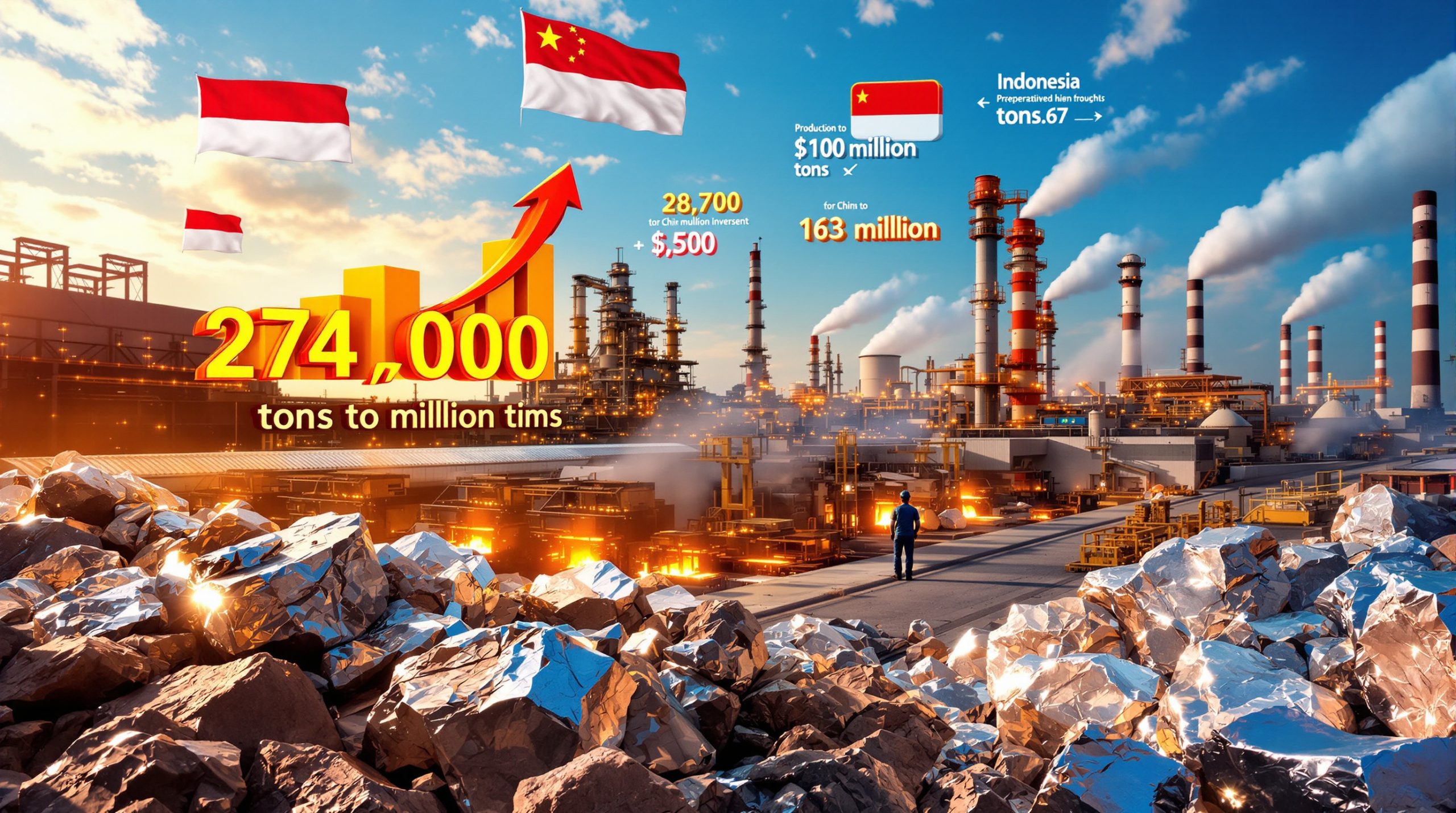Understanding Iron Ore Pricing Methodologies: The 65% Fe CFR Qingdao Index
In the complex world of commodity trading, iron ore price indices serve as critical benchmarks for market participants worldwide. These carefully calculated assessments provide transparency and facilitate billions of dollars in physical and financial transactions annually. Among these, the 65% Fe Brazil-origin fines CFR Qingdao index stands as a premium benchmark for high-grade iron ore.
What Is the Iron Ore 65% Fe Brazil-Origin Fines CFR Qingdao Index?
Definition and Importance
The MB-IRO-0009 iron ore 65% Fe Brazil-origin fines, CFR Qingdao index is a specialized price assessment that tracks high-grade Brazilian iron ore delivered to Chinese ports. This premium product commands significantly higher prices due to its superior iron content, resulting in more efficient steel production and lower emissions compared to standard 62% Fe grades.
The index serves as a crucial reference point for miners, traders, steel producers, and financial institutions engaged in the high-grade iron ore market. Its daily assessment provides the transparency needed for fair price discovery in this specialized segment.
Key Components of the Index
- Product Specification: 65% Fe content Brazil-origin fines
- Pricing Basis: CFR (Cost and Freight) Qingdao, China
- Assessment Frequency: Daily
- Unit of Measurement: USD per dry metric tonne
- Price Movement Precision: Recorded to $0.08 per tonne increments
The index captures the unique value proposition of Brazilian high-grade ores, which typically contain fewer impurities and provide better operational efficiency for steelmakers compared to standard-grade alternatives.
How Are Iron Ore Price Assessments Calculated?
Methodology Framework
Price reporting agencies employ rigorous methodologies to ensure accuracy and transparency in commodity price trends & China demand. For iron ore indices, calculations typically involve structured data collection, statistical analysis, and expert judgment when necessary.
The core of any reliable price assessment is its methodology—a documented set of principles and procedures that guide the collection, analysis, and publication of price data. These methodologies are typically published and available for public review to ensure transparency in the assessment process.
Data Collection Process
- Gathering price information from market participants through structured submission processes
- Recording actual transactions, bids, offers, and indications within the market
- Collecting data within specified 24-hour pricing windows to ensure temporal relevance
- Utilizing Data Submitter Agreements for consistent reporting and data quality
The data collection process typically relies on a network of market participants who agree to provide price information regularly. These submissions remain confidential but form the foundation of accurate price assessments.
Assessment Techniques
- Applying statistical analysis to collected data points to identify central tendency
- Implementing quality controls to identify outliers and potentially erroneous submissions
- Using normalization techniques to account for quality differentials between varying ore specifications
- Employing fallback measures during periods of low liquidity to maintain assessment continuity
As stated by Fastmarkets: "For the calculation of the 65% Fe index, judgement was applied to carry over data in today's indices due to low liquidity in the 24-hour pricing window, corresponding with published fallback measures." This transparent approach ensures continuous assessment even when market activity is limited.
Why Do Price Corrections Occur in Commodity Markets?
Common Reasons for Price Corrections
Price reporting agencies occasionally need to correct published assessments due to various factors that affect the accuracy of the original publication. These corrections maintain the integrity of the price assessment process.
While corrections may seem concerning at first glance, they actually demonstrate a commitment to accuracy and transparency. Without proper correction procedures, errors could propagate through the market, potentially affecting numerous commercial agreements and financial positions.
Input Errors
- Incorrect data entry by analysts handling large volumes of market information
- Misinterpretation of submitted information from market participants
- Omission of critical calculation steps in complex assessment procedures
- Technical issues in data processing systems that manage price calculations
According to Fastmarkets' correction notice, the August 8 error occurred "due to an input error" where "the rationale for MB-IRO-0009 iron ore 65% Fe Brazil-origin fines, cfr Qingdao index on Friday August 8 had erroneously omitted the judgment for carry-over step." This transparency about the nature of the error helps maintain market confidence.
Methodology Application Issues
- Inconsistent application of judgment factors when analyzing submitted data
- Improper implementation of fallback measures during periods of low market liquidity
- Errors in normalization calculations when adjusting for quality differentials
- Incorrect filtering of outlier data points that should be excluded from final calculations
The thoroughness of correction notices, including exactly what was corrected and why, helps market participants understand the assessment process and builds confidence in the price reporting agency's commitment to accuracy.
What Happened with the August 8 Iron Ore Index Correction?
The Specific Error Identified
The August 8, 2025 publication of the correction in rationale of iron ore 65% fe cfr Qingdao index contained an error in its rationale explanation—the text that explains how the published price was derived. This situation illustrates how price reporting agencies handle corrections transparently.
Importantly, as Fastmarkets noted, "The published price is unaffected by this error," meaning the numerical value of the index remained accurate despite the incomplete explanation of how it was calculated.
Nature of the Omission
- The original rationale failed to include information about the judgment for carry-over step
- This omission represented an incomplete explanation of how the index was calculated
- The price value itself remained unaffected by this documentation error
- The correction was published on August 12, 2025, providing timely transparency
The omission specifically related to the explanation of how low liquidity was handled in the assessment process—a critical aspect of understanding how the published price was derived when market activity is limited.
Corrected Information
- The updated rationale clarified that judgment was applied to carry over data due to low liquidity
- This approach aligned with published fallback measures in the methodology
- Additional judgment was applied to discard price indications that deviated significantly from market consensus
- The full corrected rationale provided comprehensive transparency about the assessment process
As stated in the correction notice: "The rationale entry has been corrected as follows: Fastmarkets' index for iron ore 65% Fe Brazil-origin fines, CFR Qingdao fell by $0.08 per tonne from the previous day." This precise documentation ensures market participants understand exactly how the assessment was conducted.
How Do Price Reporting Agencies Ensure Transparency?
Correction Notification Procedures
When errors are identified in published price assessments or their supporting documentation, price reporting agencies follow established protocols to ensure market participants receive accurate information promptly.
Transparency in correction procedures builds market confidence by demonstrating a commitment to accuracy and openness. Without clear correction processes, market participants might question the reliability of published assessments.
Communication Process
- Issuing formal correction notices to subscribers through established channels
- Clearly identifying the affected price assessment by name and code
- Explaining the nature of the error and correction in specific detail
- Confirming whether the published price was impacted by the identified error
- Updating databases to reflect accurate information for historical reference
Fastmarkets demonstrates this commitment to transparency by providing detailed correction notices that include specific contact information: "For more information, or to provide feedback on this correction notice, or if you would like to provide price information by becoming a data submitter to these indices, please contact pricing@fastmarkets.com."
Market Feedback Mechanisms
- Providing contact information for submitting comments about price assessments
- Establishing protocols for confidential feedback to protect market participants
- Reviewing and responding to market participant input about methodology concerns
- Continuously improving methodologies based on feedback from industry participants
Fastmarkets specifically requests that communications include "FAO Alice Li, re: iron ore 65% Fe price" and invites market participants to "Please indicate if comments are confidential." This structured approach ensures feedback reaches the appropriate personnel and respects confidentiality requirements.
What Market Information Was Available for the Assessment?
Market Data Points
The corrected rationale provided insight into the market conditions and available pricing information that formed the basis of the August 8, 2025 assessment. This transparency helps market participants understand the assessment context.
Without detailed rationales, market participants would have limited insight into how published prices were derived, potentially reducing confidence in the assessment process.
Price Indications
- Iron Ore Carajas was indicated at $118.20-120.64 per tonne by market participants
- This range represented market participants' view of fair value for the specified material
- No visible trading activity was reported within the assessment window
- Price indications serve as crucial inputs when actual transactions are limited
The specific price range provides valuable market intelligence, showing the consensus view of value even when no transactions occurred during the assessment window.
Price Movement
- The index decreased by $0.08 per tonne from the previous day
- This modest movement reflected relatively stable market conditions
- The assessment relied on judgment due to limited market activity
- Price movements are tracked with precision to provide accurate trend analysis
As stated in the corrected rationale: "Fastmarkets' index for iron ore 65% Fe Brazil-origin fines, CFR Qingdao fell by $0.08 per tonne from the previous day." This precise documentation of price movements helps market participants track trends accurately.
How Does Low Liquidity Impact Price Assessments?
Fallback Measures in Illiquid Markets
When trading activity is limited, price reporting agencies implement alternative approaches to maintain assessment continuity while ensuring prices remain representative of market conditions.
Low liquidity presents a significant challenge for price assessments, as limited transaction data requires more sophisticated approaches to ensure published prices accurately reflect market conditions.
Data Carry-Over Procedures
- Using prior period data points to maintain assessment continuity
- Applying expert judgment to determine relevance of historical information
- Weighting recent versus historical data appropriately based on market conditions
- Documenting the application of these fallback measures for transparency
Fastmarkets specifically notes that "judgement was applied to carry over data in today's indices due to low liquidity in the 24-hour pricing window, corresponding with published fallback measures." This transparency about fallback procedures helps market participants understand how assessments are derived during periods of limited activity.
Quality Control in Low-Volume Markets
- Scrutinizing available price indications more carefully when transactions are limited
- Discarding outlier values that deviate significantly from market consensus
- Consulting with market participants to validate price levels
- Ensuring transparency about assessment limitations in published rationales
According to Fastmarkets, "judgement applied to discard indications that are at a considerable distance from consensus of other participants' indications of tradeable level." This approach ensures that outlier submissions don't unduly influence assessments during periods of low liquidity.
What Are the Broader Applications of Iron Ore Indices?
Commercial Uses of Price Benchmarks
Iron ore price assessments serve multiple functions in the global steel and mining industry evolution, extending far beyond simple price discovery to facilitate complex commercial relationships and risk management strategies.
These indices have become foundational to the functioning of global iron ore markets, providing standardized reference points that enable diverse market participants to transact with confidence.
Contract Settlement
- Physical supply contracts often reference published indices for pricing
- Financial derivatives are settled against benchmark prices
- Term agreements may include formulas based on index averages
- Index-linked pricing reduces negotiation costs and increases market efficiency
The Fastmarkets iron ore 65% Fe Brazil-origin fines, CFR Qingdao index is described as "part of the Fastmarkets steelmaking raw materials package," highlighting its integration into broader commodity pricing frameworks used throughout the industry.
Market Analysis Applications
- Tracking market trends and price volatility over time
- Calculating correlation with finished steel prices to understand value chain dynamics
- Assessing regional price differentials between different iron ore markets
- Evaluating quality premiums between different ore grades
Price indices provide critical benchmarks that allow analysts to quantify market movements, enabling data-driven decision-making throughout the iron ore supply chain.
How Do Quality Differentials Impact Iron Ore Pricing?
Premium Grade Value Proposition
Higher-grade iron ores like the 65% Fe Brazil-origin material command price premiums for several reasons related to both economic efficiency and environmental benefits in steelmaking.
The price premium for high-grade ore fluctuates based on market conditions, particularly the spread between steel prices and input costs like coking coal, as well as environmental policy pressures affecting steelmakers.
Economic Benefits
- Higher metal yield per tonne of ore processed in blast furnaces
- Reduced coking coal consumption in steelmaking operations
- Lower waste generation and disposal costs during processing
- Increased blast furnace productivity through improved operational efficiency
These economic advantages translate directly into cost savings for steelmakers, justifying the premium prices paid for higher-grade material, particularly during periods of high steel prices or elevated coking coal costs.
Environmental Considerations
- Reduced carbon emissions per tonne of steel produced
- Lower energy consumption in steelmaking processes
- Decreased slag production and disposal requirements
- Alignment with decarbonization initiatives in the steel industry
As environmental regulations tighten globally, the environmental benefits of high-grade iron ore become increasingly valuable to steelmakers seeking to reduce their carbon footprint, further supporting premium pricing for 65% Fe material.
FAQ: Common Questions About Iron Ore Price Assessments
How frequently are iron ore indices published?
Most major iron ore benchmarks are assessed daily, with publications occurring at specified times aligned with major trading markets. The MB-IRO-0009 iron ore 65% Fe Brazil-origin fines, CFR Qingdao index is assessed daily, capturing market movements with precision down to $0.08 per tonne.
Some specialized assessments may be published weekly or monthly depending on market liquidity, but the primary benchmarks that drive commercial contracts typically maintain daily assessment schedules.
What does CFR Qingdao mean in the price assessment?
CFR (Cost and Freight) Qingdao means the price includes both the cost of the iron ore and the freight charges to deliver it to Qingdao port in China, but excludes insurance and any import duties or taxes.
This pricing basis is particularly important for iron ore, as freight represents a significant component of the delivered cost, especially for Brazilian material that travels significantly longer distances to reach Chinese ports compared to Australian exports.
Why is Brazilian iron ore tracked separately from Australian material?
Brazilian iron ore, particularly from the Carajas region, typically has higher iron content and different impurity profiles compared to Australian ores. These quality differences, combined with distinct freight routes and costs, justify separate price tracking.
The distinct specifications and origin requirements ensure that the index captures the unique value proposition of Brazilian high-grade fines, which typically contain fewer impurities like phosphorus and alumina compared to other origins.
How do market participants use these price assessments?
Mining companies, steel producers, traders, and financial institutions use these assessments for physical contract pricing, financial risk management, investment analysis, and strategic planning.
The assessments provide a neutral reference point that facilitates transactions between buyers and sellers, enables hedging through derivatives markets, and supports forecast 2025 insights through transparent price discovery.
What happens when errors are found in published prices?
Price reporting agencies issue correction notices, update their databases, and communicate with subscribers. If the error affected the published price value itself, any contracts or derivatives that referenced the incorrect price may need to be adjusted.
As demonstrated in the August 8, 2025 correction in rationale of iron ore 65% fe cfr Qingdao, price reporting agencies provide detailed explanations of the error and correction, ensuring market participants understand exactly what was corrected and whether the published price was affected.
Disclaimer: This article provides general information about iron ore pricing methodologies and market practices. It is not intended as investment advice. Commodity markets involve significant risks, and prices can be volatile. Past price movements are not necessarily indicative of future performance. Readers should consult with qualified financial and commodity market professionals before making investment or commercial decisions based on surplus-driven price decline or surging miner demand.
Ready to Spot the Next Major Mining Discovery?
Discover potentially transformative mineral announcements as they happen with Discovery Alert's proprietary Discovery IQ model, which instantly analyses ASX announcements and delivers real-time alerts on significant discoveries. Visit the Discovery Alert discoveries page to explore how historic mineral discoveries have generated substantial returns for early investors.




